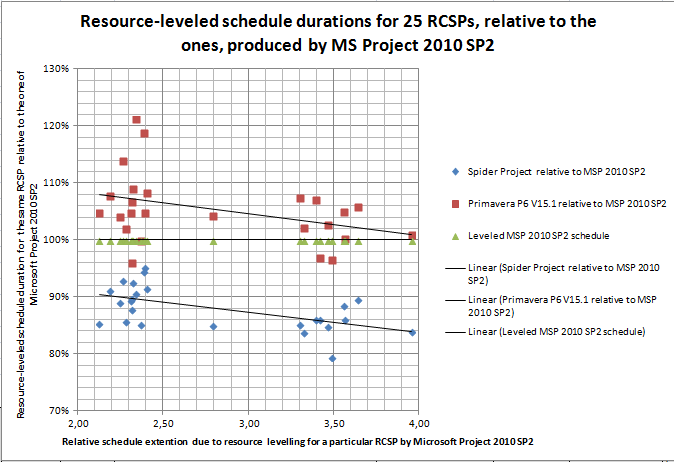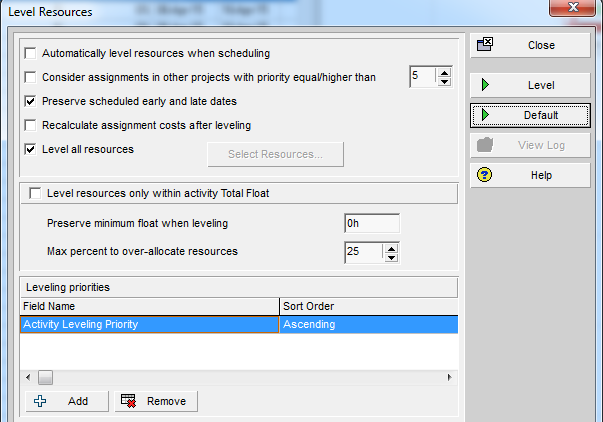Dear all,
Few years ago I posted here an articles on brief comparison of resource levelling engines of different tools:
In addition to this I started an initiative to develop requirements to conduct more scientific resource levelling engine comparison of different tools. That initiative did not really proceed back then.
Now a couple of years later I still did not find any report on comparing of resource levelling of different project management programs, therefore I want to restart my 2 years ago initiative but with much more flexible rules.
So, what I suggest:
Anybody can post here a comparison results of resource levelling outcomes of at least any 2 tools using any comparison method he has chosen for himself. The only hard requirement would be: that the test would be repeatable.
In such way we can build a sort of database of results, from where anybody can track conclusions independently.
I also plan this 1st post in this thread with the comulative results table, so that it is all in one place.
Brief digest on the comparison results so far (updated 04.09.2015 01:27 CET)
======================================================================
| Microsoft Project 2010 SP2 | Spider Project Optimization Plus | Primavera P6 v 15.1 |
Comparison criteria | Average ratio leveled / not leveled MSP 2010 SP2 | Average ratio Leveled / not leveled Spider | Average Spider Project duration relative to MSP 2010 SP2 | Average ratio leveled / not leveled Primavera P6 V15.1 | Average Primavera P6 V15.1 relative to MSP 2010 SP2 |
25 problems from RCSP library | 2,81 | 2,46 | 88% | 2,95 | 105% |
Graphical representation of results, relative to Microsoft Project 2010






















Replies